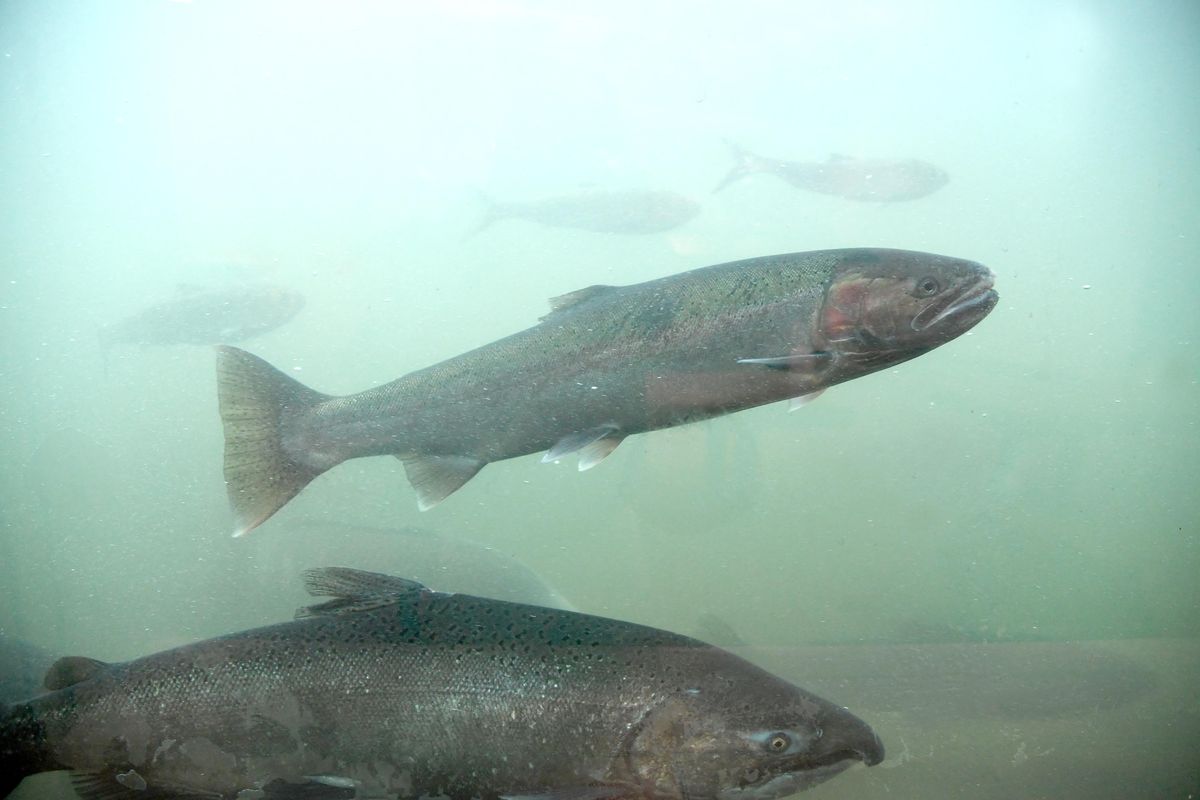Steelhead fishing will be catch-and-release in Idaho

In the face of a dismal steelhead run, Idaho on Monday canceled its harvest season this fall and will allow only catch-and-release steelhead fishing.
Washington is expected to announce similarly restrictive measures in the coming days, likely marking the first time in decades that catch-and-keep steelhead fishing will not be allowed on the Snake River and its tributaries.
The move is a gut punch for fishing-related businesses, from outfitters and guides who make their living helping people catch fish to businesses – like tackle shops, hotels and restaurants that count on an influx of anglers and their cash each fall and winter.
“I just lost 70 percent of my income for my year,” said Toby Wyatt, owner of Reel Time Fishing at Clarkston. “It’s probably the biggest blow I’ve ever had in my career as a guide.”
The Lewis Clark Valley Chamber of Commerce announced it canceled its annual Snake-Clearwater Steelhead Derby that serves as both a fundraiser and a way to showcase the fishing opportunities and other amenities of the valley to people who come from out of town to participate in the weeklong event.
Chamber President Kristin Kemak said the chamber will look to hold an alternative event that highlights other outdoor opportunities.
Kemak and Wyatt both said they understand why the states are moving to restrict harvest and believe it’s the best way to protect the health of future fishing seasons.
“I 100 percent agree with it,” said Wyatt. “I know it’s not the states’ fault at all. It’s just a combination of drought conditions and ‘The Blob’ in the ocean.”
Riggins Mayor Glenna McClure was less understanding and said she would have liked fisheries managers to wait before implementing restrictions that are sure to hurt small towns like hers.
“For the economy of Riggins, that will just kill this little town,” she said. “People don’t come here to catch and release. They come here to catch and keep.”
The emergency rules take effect Friday. The main catch-and-keep steelhead season on the Snake and Salmon rivers – as well as the Grande Ronde in Washington – doesn’t open until Sept. 1, but a short section of the Clearwater River, from its mouth to Memorial Bridge at Lewiston, opened Aug. 1.
Chris Donley, regional fisheries manager for the Washington Department of Fish and Wildlife at Spokane, said he is confident measures in place now restricting fishing at the mouths of tributaries are protecting the fish as they migrate upriver.
“We are considering rules similar to Idaho’s but won’t have them in place before early September,” he said Wednesday. “There is no need to hurry since there aren’t any fish in the (Snake) system yet anyway.”
This fall will mark the second year in a row that A-run steelhead have performed poorly. Last year the run comprised of fish that generally spend just one year in the ocean tanked. Biologists blamed low flows in the Snake and Columbia rivers when the fish migrated to the Pacific Ocean as juveniles, and “The Blob” – a strange mass of warm water that enveloped the near coastal waters off of Oregon and Washington.
The poor return of A-run steelhead in 2016 signaled a likely poor run of B-run steelhead this year. Those steelhead generally spend two years in salt water and experienced the same poor river and ocean conditions in 2016. The larger B-run fish are just starting to enter the Columbia River and fisheries managers don’t know yet if their prediction will play out.
But they are reeling from the number of A-run steelhead counted to date at Bonneville Dam. Fisheries managers expected a down year but hoped it would best the 2016 run by a wide margin. So far the opposite is true. The run is amongst the lowest on record at Bonneville and the lowest ever at Lower Granite Dam on the Snake River.
Before the run began, fisheries managers estimated 112,100 A-run steelhead would pass Bonneville Dam this year. They now expect only about 54,000 – including 21,000 wild fish.
Joe DuPont, regional fisheries manager of the Idaho Department of Fish and Game at Lewiston, said just 3,300 Idaho-bound hatchery steelhead have been counted at Bonneville and only 6,600 are expected. Of those only about 4,600 will make it back to Idaho.
Hatcheries in the state need 2,680 steelhead for spawning. However, DuPont said many of the 4,600 A-run steelhead will return to places they can’t be trapped and its not unusual for more than half of the returning hatchery steelhead to be harvested during fishing seasons.
“As such, we need to restrict harvest to ensure we keep our hatcheries full,” he said.
DuPont said biologists will closely monitor both the A-run and B-run, and if numbers pick up it’s possible that harvest could be reopened in select areas. He said he is confident the catch and release regulations are sufficient to protect wild fish that are listed as threatened under the Endangered Species Act.
“I can tell you we have had many catch and release fisheries across the state of Idaho where fish rebounded and flourished,” he said. “Catch and release fishing has proven to be a successful technique to help rebound fisheries that have declined for various reasons.”
Outdoors editor Rich Landers contributed to this story package.